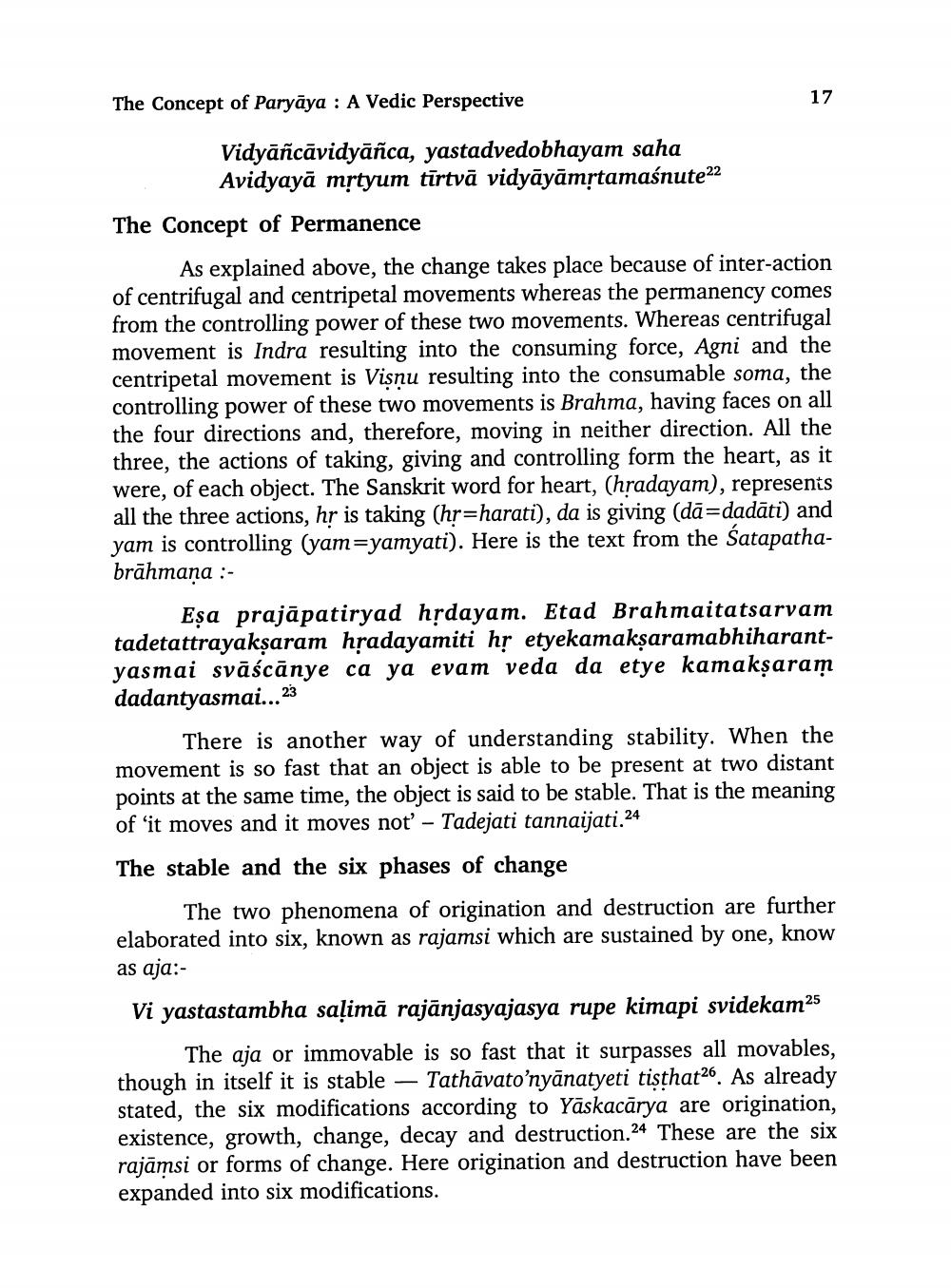________________ The Concept of Paryaya : A Vedic Perspective 17 Vidyancavidyanca, yastadvedobhayam saha Avidyaya motyum tirtva vidyayamstamasnute22 The Concept of Permanence As explained above, the change takes place because of inter-action of centrifugal and centripetal movements whereas the permanency comes from the controlling power of these two movements. Whereas centrifugal movement is Indra resulting into the consuming force, Agni and the centripetal movement is Visnu resulting into the consumable soma, the controlling power of these two movements is Brahma, having faces on all the four directions and, therefore, moving in neither direction. All the three, the actions of taking, giving and controlling form the heart, as it were, of each object. The Sanskrit word for heart, (hradayam), represents all the three actions, hr is taking (hr=harati), da is giving (da=dadati) and yam is controlling (yam=yamyati). Here is the text from the Satapathabrahmana : Esa prajapatiryad hrdayam. Etad Brahmaitatsarvam tadetattrayaksaram hsadayamiti hs etyekamaksaramabhiharantyasmai svascanye ca ya evam veda da etye kamaksaram dadantyasmai... 23 There is another way of understanding stability. When the movement is so fast that an object is able to be present at two distant points at the same time, the object is said to be stable. That is the meaning of 'it moves and it moves not - Tadejati tannaijati. 24 The stable and the six phases of change The two phenomena of origination and destruction are further elaborated into six, known as rajamsi which are sustained by one, know as aja:Vi yastastambha salima rajanjasyajasya rupe kimapi svidekam25 The aja or immovable is so fast that it surpasses all movables, though in itself it is stable -- Tathavato'nyanatyeti tisthat26. As already stated, the six modifications according to Yaskacarya are origination, existence, growth, change, decay and destruction.24 These are the six rajamsi or forms of change. Here origination and destruction have been expanded into six modifications.




